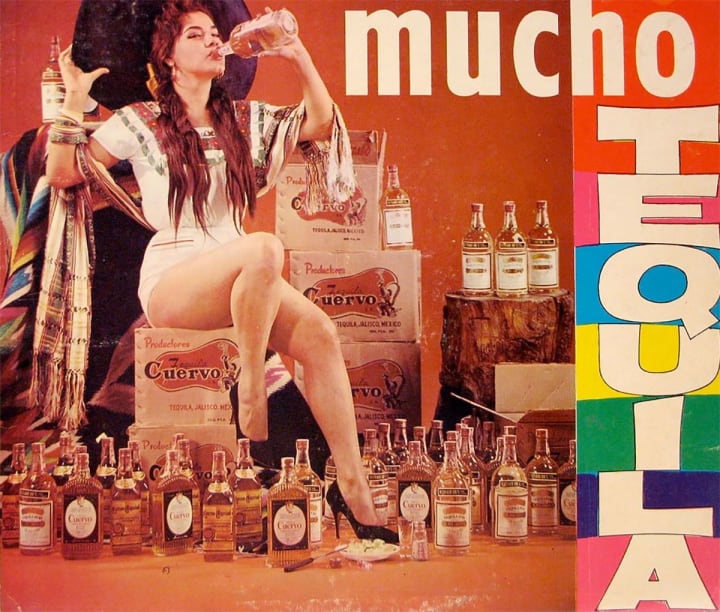Tequila: The Whole Story
Forget the old myth about the worm; here are all the real facts about tequila, Mexico's most famous legal export.
"No names, no business cards, no resumes." Harrison Ford says to Melanie Griffith in Working Girl. "I promised myself that when we met we'd drink tequila. No Chardonnay, no frog water, real drinks."
Tequila: Mexico's most famous spirit. Its image as a macho drink, gulped from a shot glass with a lick of salt and a squeeze of lime, persists even though three quarters of the tequila consumed is in margaritas. And the current buzz about tequila is focused on añejo - or aged tequila bottles - many of which cost $25 to $40. In fact, the José Cuervo firm, which accounts for almost half the tequila sold in America, has its popular La Reserva de la Familia, priced at $75 a bottle.
Tequila is a distilled spirit that seems to engender a certain amount of contradiction and confusion. To that end, tequila producers are quick to dispel two common myths - that their product is not made from cactus and that they never put a worm in the bottle. (More on the worm later...)
Tequila may be made only from the blue agave, which is actually part of the lily family. Virtually all the blue agave grown to make tequila comes from Jalisco province, in West Central Mexico; the volcanic soil best suited to the cultivation of blue agave is found near the village of Tequila, hence the name of this iconic spirit.
Once harvested, the bulb of the agave plant, which resembles a giant pineapple, is steamed in order to convert its starches into sugar. The sugar is then washed out of the fibrous fruit and the resulting aguamiel, or honey water, is fermented to produce alcohol. The low-alcohol liquid is then doubly distilled in copper pot stills to produce tequila as we know it. At least 51 percent of the sugar in the aguamiel usually comes from the blue agave; the rest may be cane or corn sugar. If a tequila is made 100 percent from blue agave, that fact will appear on its label, and its taste is likely to be more assertive.
In 1973, when the Mexican government registered the name Tequila, about one million cases were shipped to the US; today, that figure is closer to five million cases per year. Although José Cuervo dominates the market, followed by Sauza, several other brands have established a solid reputation. The choice is such that a number of bars and restaurants now offer tasting flights of tequila. For example, at New York's Arizona 206, nearly 20 tequilas are on display, and may be sampled in flights of three.

Vintage Tequila Ad
The main differentiating factor between tequila types comes down to the aging process. Basic tequila, usually labeled 'Silver', is unaged; in fact, the El Tesoro label proudly states: BOTTLED FRESH WITHIN 24 HOURS OF DISTILLATION. These tequilas have a fruity, spicy, even peppery aroma and taste.
Gold tequilas, which may be aged for two months or so in large barrels, often obtain their darker color from caramel. Añejo tequilas must be aged for one year in small barrels, and this shows up in their taste. For example, Dos Reales Añejo, from José Cuervo, is softer and richer than Cuervo 1800. Similarly, Herradura Añejo has more depth and flavor than Herradura Silver. The Añejos of Patrón and Porfidio, too, are both notable for their smooth, polished taste. Some aficionados insist that, unlike whiskies and brandies, tequila does not benefit from extended barrel aging. Cuervos La Reserva de la Familia, for example, has been aged only three years.
As for that worm legend, it's actually a caterpillar, and some producers of mezcal put one in each bottle. The myth is so common that a British man who wanted to try this specialty once went into Harrod's, London's most famous department store, and asked for "mezcal with a worm." The woman in the store replied, "Pets, sixth floor." Mezcal, which is similar to tequila but usually more rustic and less refined, is made from different varieties of maguey, which is the local name for agave in Oaxaca, the mecca for mezcal production. The story of mezcal and worms will be left for another time but for now, know that this should not be a concern when it comes to tequila.
Tequila has come a long way since the inception in the 16th century in its namesake town in Mexico. There's now a wide range of choices available across the United States in both quality and price; no matter what tequila you select, don't make the mistake of looking for that worm at the bottom of the bottle.
But for now, I now what I'm having a shot of tonight... :)
About the Creator
Patricia Sarkar
Raised on a steady diet of makeup and games. Eager to share my experiences with the world and make a difference, article by article! :)






Comments
There are no comments for this story
Be the first to respond and start the conversation.